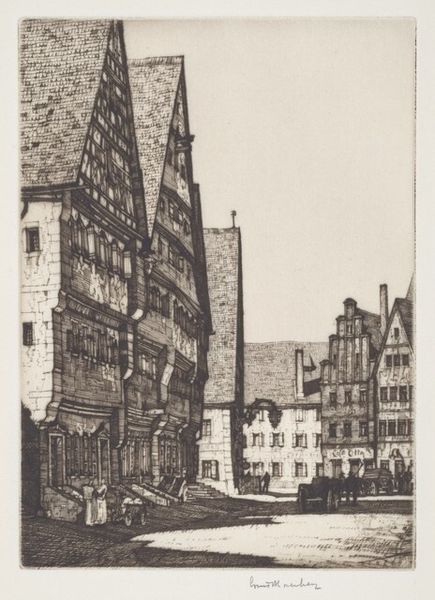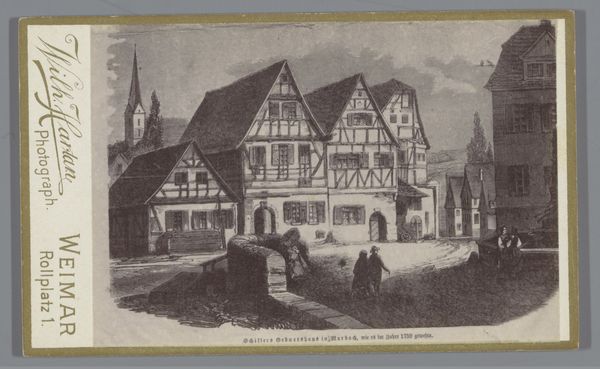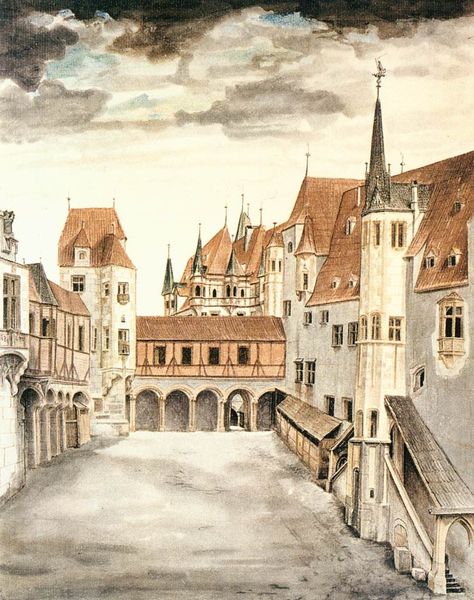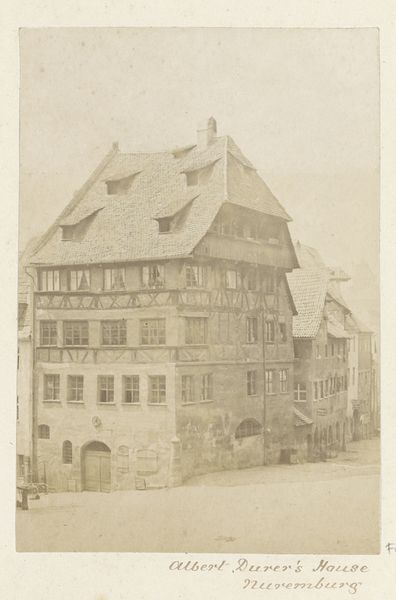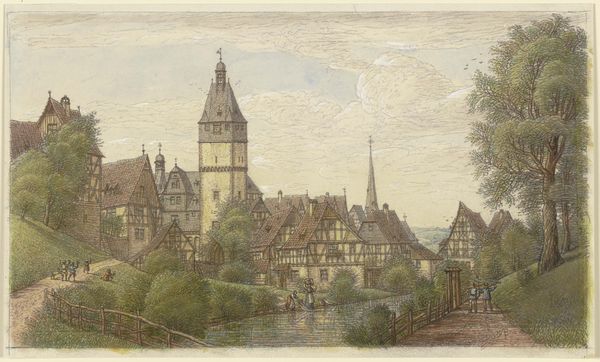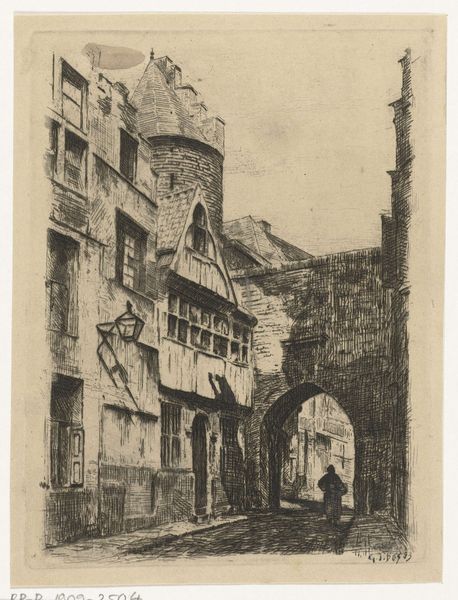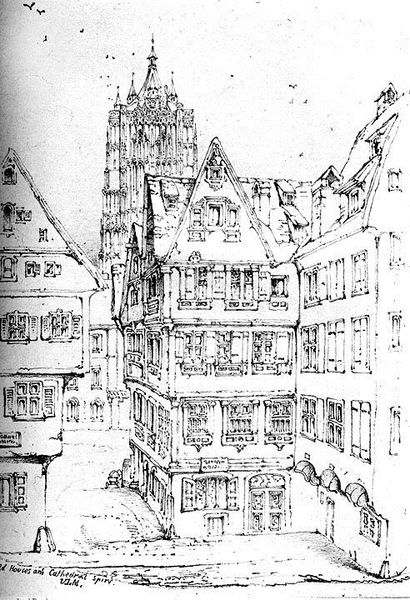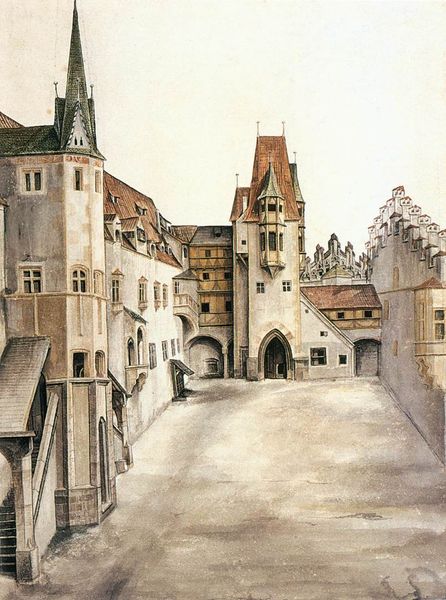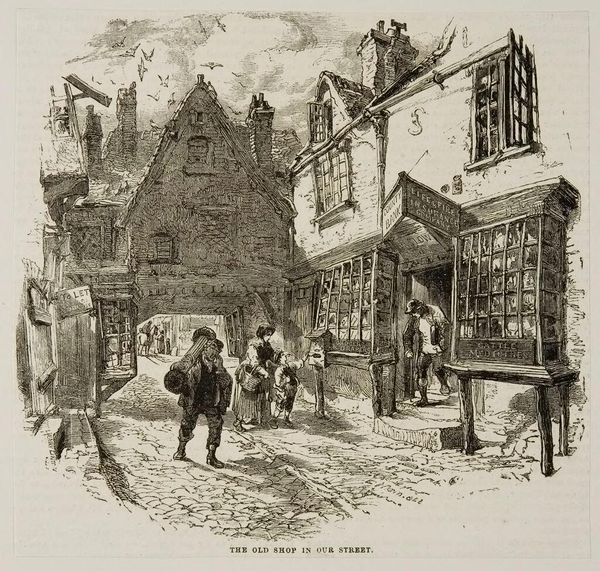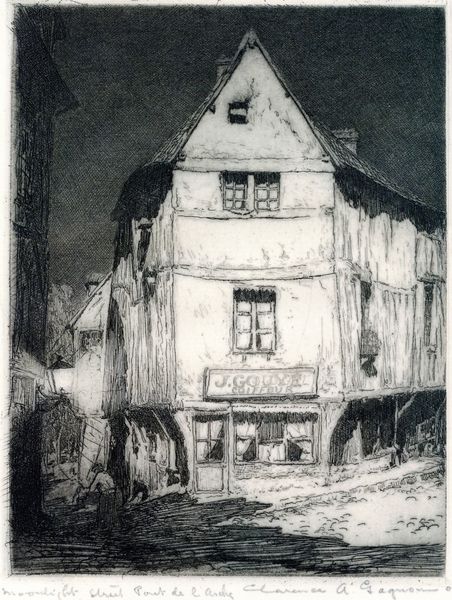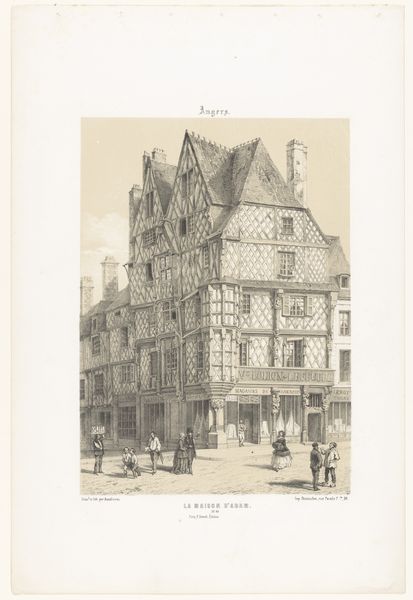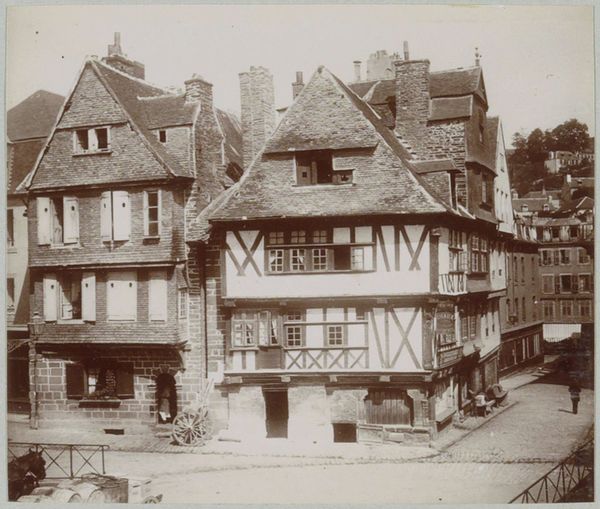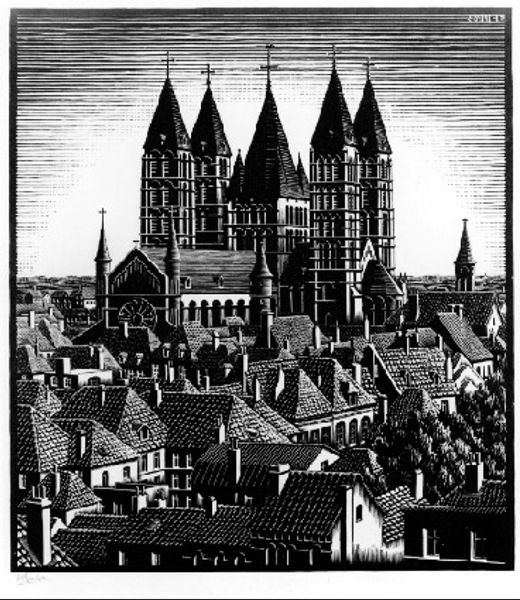
Copyright: Public domain
Editor: Here we have Édouard Riou’s "Journey to the Center of the Earth", an engraving from 1864. It strikes me as very theatrical, almost like a stage set, especially with the figures posed at the front. What are your thoughts on this print? Curator: The engraving technique lends itself well to architectural detail, which Riou exploits. Note how the lines meticulously describe the half-timbered construction and the textures of the stonework. How does the contrast of light and shadow affect your perception? Editor: I think the dark shadows emphasize the height and intricacy of the building, but also add to that theatrical feel. Almost like stage lighting. Does the somewhat romantic style speak to the artwork? Curator: Indeed. The Romantic aesthetic favoured strong contrasts, emotion, and often, a sense of the sublime. Observe how the receding perspective, coupled with the architectural verticals, creates a sense of depth and draws the eye upwards. Consider the balance of vertical and horizontal lines; how do they contribute to the stability of the image, and where do they not? Editor: That tension is interesting. I see it too – how the regular window patterns offer a kind of structural reassurance against the wild, organic shape of the tree and somewhat stormy sky. Curator: Precisely! This dynamic, achieved through formal elements alone, evokes an emotive response rather than providing simple illustration. Editor: I see. So by focusing on these details we're led into an awareness and appreciation of Romanticism! That really enriches my understanding. Thanks for this approach! Curator: My pleasure! Hopefully you understand that Romanticism used contrasts and juxtapositions to deepen feelings towards visual arts.
Comments
No comments
Be the first to comment and join the conversation on the ultimate creative platform.

